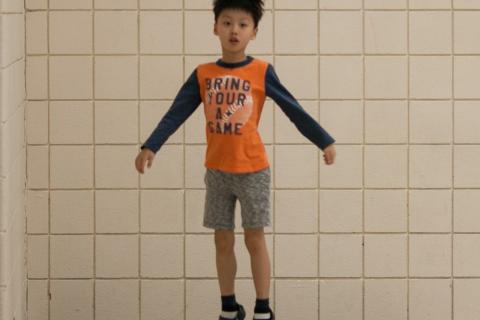
~ 3 minute read
Participating in physical activity can help make you feel good, create routine and provide an opportunity to create social connections. Being physically active can also improve physical health (e.g., reduce risk of a heart attack). Participating in physical activity can also improve mental health by reducing stress and anxiety (Hillier et al., 2010), and provide a sense of predictability, as well as feelings of fun, joy and pleasure.
Since the COVID-19 pandemic has disrupted our daily routines and lives in many ways, being physically active during this time is especially important. Below, we provide examples of physical activity, and tips on how to be physically active.
1) Examples of physical activity
Some physical activities such as participating in team sports and going to the gym may not be possible right now. The good news is that there are many other ways you can engage in physical activity during this time. These activities include climbing stairs, walking around your home, online exercise classes, dancing, Zumba, yoga, walking or jogging, skipping, and hopscotch. Household chores such as cleaning, vacuuming, or gardening also are great forms of physical activity. Body weight exercises such as push-ups, sit-ups, jumping jacks and squats are other ways to be active.
Since we are spending a lot of time at home, one activity that might be fun is to play a game of bowling. Start by lining up some empty plastic bottles or fill them with water if you are looking for a challenge. Then use a mini soccer ball, tennis ball, or mini basketball as the bowling ball and try to knock down the bottles. Keep score if you want to add an element of competition.
2) Doing activity as a family
Doing activity as a family can be fun and a great way for everyone to be active. It may be helpful to set a goal together as a family. One goal might be that everyone goes out together for a 15 minute walk each evening after dinner. Depending on how that goes, try to build up the amount of time (e.g., 15 minutes to 20 minutes). You may also want to keep track of how many days per week you went out for a walk as a family and try to increase the frequency of the walks if interested and if possible.
3) Incorporating physical activity throughout the day
Breaking up activity into chunks is a great way to be active. Try to include exercise breaks throughout the day where you do something active for 5 minutes, instead of doing 30 minutes of activity all at once. For example, after finishing an activity such as doing a board game, puzzle, or watching TV, try to do something active for 5 minutes.
Another effective way of incorporating physical activity into your day is to add exercise to a task you do often, such as using the washroom or washing your hands. For example, each time you go to use the washroom, do 5 squats or 5 jumping jacks. Without even knowing it, these small chunks add up throughout the day to 30 or more minutes!
4) Creating a routine
For some individuals, being active at the same time or place, can be a helpful reminder to be active. By creating a routine, activity can also be more enjoyable as the timing and type of activity becomes more predictable. Setting an alarm can be a helpful reminder and a great motivator. You can also have an exercise buddy- every time you complete your activity, you can call or text him/her and let them know you are done.
When you make physical activity fun, and simply a part of your day, you are more likely to do it. Have fun being active, and we look forward to hearing from you on the ways in which you and your family and friends are being active.
Resources:
Physical activity resources:
https://www.specialolympics.org/school-of-strength
https://www.specialolympics.ca/story/how-special-olympics-coaches-and-athletes-are-staying-active-and-connected-amid-covid-19
Canadian PA guidelines
References:
Hillier, A., Murphy, D., & Ferrara, C. (2011). A pilot study: short-term reduction in salivary cortisol following flow physical exercise and relaxation among adolescents and young adults on the autism spectrum. Stress and Health, 27 (5), 395-402.
About Patrick Jachyra, PhD
Patrick Jachyra, PhD, is a post-doctoral fellow at the Azrieli Adult Neurodevelopmental Centre at the Centre for Addiction and Mental Health. His research examines how physical activity impacts the health of individuals with developmental disabilities across the lifespan. In the community, Patrick is the founder and former director of the Extraordinary Youth Council Program, a community recreation program for youth and young adults with developmental disabilities. Patrick’s work in the community has been recognized by numerous awards including the prestigious University of Toronto Awards of Excellence.
About Bri Redquest, PhD
Bri Redquest, PhD, is a post-doctoral fellow for the Azrieli Adult Neurodevelopmental Centre at the Centre for Addiction and Mental Health. She has a strong interest in participatory research in the area of physical and mental health promotion for people with developmental disabilities, as well as their family members.
DISCLAIMER: This document reflects the views of the author. It is Autism Ontario’s intent to inform and educate. Every situation is unique and while we hope this information is useful, it should be used in the context of broader considerations for each person. Please contact Autism Ontario at info@autismontario.com or 416-246-9592 for permission to reproduce this material for any purpose other than personal use. © 2020 Autism Ontario 416.246.9592 www.autismontario.com



